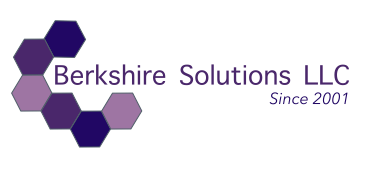Abstract: Setting up a private, client-only access area in WordPress is definitely possible. Here’s a project plan with the steps needed to set up a client portal on a WordPress website.
Project Planning: How to Setup a Client-Only Access Portal in WordPress
Project Overview:
This project aims to create a secure, private area for clients on a WordPress website. The portal will allow clients to log in and access exclusive content, files, and services tailored specifically to them.
Key Objectives:
- Create user accounts for clients with restricted access.
- Set up private pages or areas only accessible by logged-in clients.
- Protect specific content (documents, downloads, or reports) for client use.
- Ensure a secure and user-friendly experience for clients.
Steps to Set Up a Client Portal in WordPress:
1. Initial Setup and Plugin Selection
- Install WordPress: Ensure the WordPress site is up and running, and updated to the latest version.
- Choose a Membership/Client Portal Plugin:
- Plugins to consider:
- MemberPress: A powerful membership plugin with content restriction capabilities.
- WP-Members: A free plugin for restricting access to posts and pages.
- Ultimate Member: For creating advanced user profiles and managing client access.
- Restrict Content Pro: Lightweight and effective for content restriction.
- Plugins to consider:
2. Configure User Registration and Login
- Enable Client Registration:
- Go to Settings → General and enable “Anyone can register.”
- Set the Default Role to “Subscriber” (or custom role based on the plugin you use).
- Add Registration & Login Pages:
- Most client portal plugins will create a registration and login page for you. If not, you can add a new page and use a shortcode provided by the plugin.
- Customize the registration form to collect relevant client information.
3. Set Up User Roles and Permissions
- Create Custom Client Roles (optional):
- Use a plugin like User Role Editor to create custom roles for clients if needed.
- Assign Permissions:
- Configure what clients can and cannot access based on their role.
- Restrict access to specific pages, files, or services using the membership plugin settings.
4. Restrict Content Access
- Create Private Pages/Posts:
- Use your membership plugin to restrict content by user role.
- Create pages or posts marked as “Private” or “Clients Only.”
- Restrict File Access:
- If the portal includes downloadable files, ensure files are restricted to logged-in users.
- Use a plugin like Prevent Direct Access to secure file links from public access.
5. Design Client Dashboard
- Customize the Dashboard:
- Add client-specific links or widgets to the WordPress dashboard using the plugin.
- Customize the client’s experience by designing a clean, easy-to-use interface where they can access documents, services, or reports.
6. Set Up Notifications and Communication:
- Automated Emails:
- Configure email notifications for successful registration, password changes, or new content updates.
- You can use plugins like WP Mail SMTP to ensure reliable email delivery.
- Direct Client Messaging (optional):
- Use plugins like Front End PM or BuddyPress for internal messaging between clients and the site owner.
7. Testing and Launch
- Test User Accounts:
- Create a test client account to verify login, registration, and access to private content.
- Ensure that private pages are correctly hidden from non-logged-in users.
- Check Mobile Responsiveness:
- Test the client portal on multiple devices to ensure it’s user-friendly across all platforms.
8. Maintenance and Support
- Ongoing Content Updates:
- Regularly add new content, files, or features to keep the portal engaging for clients.
- Client Support:
- Set up a support system for clients to get assistance if they face any issues using the portal.
Additional Recommendations:
- Security: Use a plugin like Wordfence or Sucuri to ensure the portal is secure.
- Backup: Ensure the website has regular backups to protect client data.
- SSL Certificate: Make sure the website uses SSL to encrypt all data exchanged between the client and the website.
Timeline:
- Day 1-2: Install WordPress and configure basic settings.
- Day 3-4: Install and configure the client portal plugin, set up user roles and content restriction.
- Day 5: Design and customize the client dashboard.
- Day 6-7: Testing and launch.
Keywords:
1. Client Portal Setup
2. WordPress Private Access
3. Membership Plugin
4. Content Restriction
5. User Role Management
6. Client Dashboard
Primary Category
Sub-Domain
Confidentiality
No
